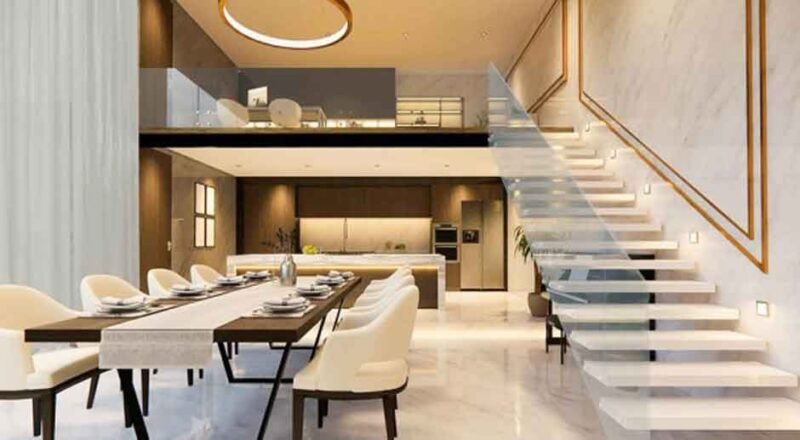
Entering a well-designed home is undeniably delightful. When we imagine interior design and home decor, it’s the way all the pieces seamlessly blend that grabs our attention while crafting an atmosphere that’s both visually pleasing and inviting. Though the idea of hiring an interior designer to transform your space is alluring, Peak Residential Management experts advises it’s not always a realistic choice. Budget constraints, time limitations, or the desire to express your own creativity can all drive you towards the path of designing your own space..
The good news is, you can still attain that designer appeal in your home without breaking the bank. In this article, we’ll delve into practical methods for achieving a professionally designed look for your home, all within your budget.
Make an Interior Design Blueprint
Before jumping into any home improvement endeavours, it’s imperative to develop a design plan that serves as a guiding compass for the world of decor. Kickstart this process by defining your personal style and exploring diverse sources of inspiration, ranging from magazines and online platforms to the realms of social media.
Don’t limit your sources of inspiration to traditional interior design outlets alone; think outside the box. Your beloved restaurants or hotels, for instance, often boast distinctive and captivating design elements. Once your vision crystallises, weave it into a cohesive colour scheme that ties all the rooms together.
Invest in Key Furniture Pieces
Prioritise the selection of high-quality, consistent furniture pieces, such as a refined sofa or a luxurious velvet accent chair. Ensure that the chosen styles align with the scale of each room while maintaining a uniform aesthetic in your space. Leave ample space around these furnishings to foster an open atmosphere, and strategically position them to create inviting conversation areas. Opt for multifunctional furniture items to maximise utility, and anchor your space with timeless central pieces. Layer in pairs of accent furnishings for added depth and character.
Pay Attention to Lighting
Lighting has a huge impact on the overall look and feel of a room. Harsh overhead lighting can make a space feel cold and unwelcoming, while layered lighting creates a warm, inviting ambience. Install dimmer switches to control light levels, and use lamps or sconces to create a soft glow in living areas. Position lighting to highlight artwork or architectural details. Task lighting and accent lighting also help draw the eye to specific areas, creating a polished look.
Choose a Cohesive Colour Palette
Sticking to a cohesive colour palette throughout your home is key to achieving a designer look. Neutral walls serve as a backdrop that allows your decor to take centre stage. Then layer in punches of colour through accessories, art, pillows, and other decorative pieces. Limit your colour palette to just 3-5 complementary hues for a coordinated aesthetic. If you want to make a bold statement, paint a single accent wall in a vibrant tone.
Incorporate Mirrors Strategically
Mirrors are a designer trick to make a space look larger and brighter. Consider placing mirrors across from windows to reflect light. Or hang a statement mirror above a console or mantel to create a focal point. Pairing two mirrors on adjacent walls also makes the space seem bigger. Just be sure to properly anchor any heavy wall mirrors.
Pay Attention to Textures and Fabric
Layering different textures and fabrics brings visual depth and dimension to a space. For example, you can drape sheer curtains to create an airy ambience and toss a plush throw blanket over a stylish armchair for added warmth and cosiness. When it comes to your seating, consider placing velvet pillows on a soft chenille sofa to achieve a delightful contrast. Combine smooth, soft, nubby, and sleek textures in accessories for lots of tactile interest.
Last Word
Although hiring an interior designer is a fantastic choice, it’s not the sole route to attaining a professionally designed appearance for your home. Achieving a designer-inspired look is entirely feasible with proper guidance. The crucial factor involves adhering to straightforward principles, nurturing your creativity, and integrating your distinct style into the design journey.

